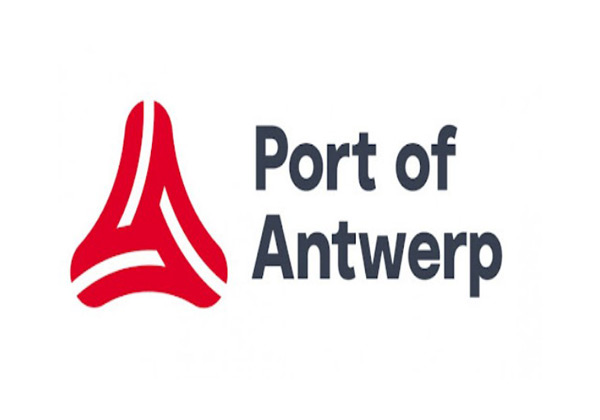
INSTC-Port of Antwerp: a formidable future logistics solution for India-EU cargo flows
MUMBAI : I find it extremely interesting to monitor new cargo transit developments across the world and analyze its impact on Antwerp Port as a gateway to Europe. A recent one that I was closely following is the International North South Transit Corridor (INSTC).
There was so much publicity about the cargo block train that left from Finland to India. The transit mode is expected to reduce the duration and cost of cargo transport between the India-EU corridor. I started to wonder whether such an offering could present strong competition to maritime gateway ports like Antwerp. Hence, I decide to seek views on the subject from industry experts that have practical exposure in doing business across this India-EU corridor and thought leaders in this space. Here are some interesting observations.
Shantanu Bhadkamkar, President, Association of Multimodal Transport Operators of India (AMTOI)

“Macroeconomics studies demonstrate that sometimes the increase in the number of players, particularly those offering a differentiated service (or product) satisfying the exact needs, actually increases the size of the market, and it more than compensates for the reduction of the market share. This is particularly true where both players are competent & innovative. Therefore, the new development can be a two-fold opportunity for the Port of Antwerp as it can expect growth in the volume of the goods transported from their catchment areas; it is also a potential opportunity for acquisition.A record 12,400 trains were deployed in 2020 to carry 1.13 million TEU on the China-Europe route. The new option has neither reduced the volume of cargo moving via seaports nor the freight rates for ocean cargo. New logistics solutions create barriers to near sourcing and protectionism or reverse globalization, as new options facilitate the supply chain resilience. Naturally, it will contribute to growth in cargo moved by sea freight.”
tortor.

Pranab Jha, Vice President – Shipping (Group), JSW Steel
“With an objective to reduce transportation time and cost in comparison to the traditional route, INSTC sure looks promising. However, in my view it does not have the economic viability or the operational efficiency to become a competition for gateway ports like Antwerp. Any multimodal with shorter land transit in comparison to sea leg is more efficient but for INSTC with substantially higher land transport has certain economic disadvantages and surely not sustainable in terms of carbon footprints.
Being the second largest European container port, Antwerp definitely should see this as a great opportunity to reduce per unit cost by upsizing vessels and increasing aggregated capacity from western European countries to increase the container throughput per vessel attracting large ships. Antwerp could leverage its geographical advantage & infrastructure strategically for global connection and to attract ever expanding global trade.”
Huned Gandhi, Managing Director Air & Sea Logistics Indian Subcontinent, DACHSER India

“Alternative options are much needed to facilitate in balancing the demand & supply on such important trade corridors, especially in the current situation where there is massive pressure due to the acute shortage of space & inventory with all major shipping lines. This is also leading to an exorbitant increase in freight levels that are clearly not sustainable in the long run. Transportation by ships will continue to be the most optimal mode of transportation due to the sheer capacity handling per ship. However, multi modal solutions like the International North–South Transport Corridor (INSTC) will also help to support increased trade due with progressive globalization.
Such innovative trade corridors will only complement the existing port infrastructure. The in-transit security needs to be ascertained and secured, once this is done, then the route can easily be opened up for all types of cargo. Connecting ASEAN countries with similar road / rail / solutions would also be helpful in the times to come. Improvements on rail connections between India and Bangladesh would also facilitate trade between the countries.”

Mahesh Khetan, Global Head – Supply Chain, Grasim Industries Ltd (Advanced Material), Aditya Birla Group
“Nurminen logistics is history’s first logistics operator who has sent a block train from Europe to India via the Western wing of the International North-South Transport Corridor (INSTC). Ocean shipment demand is increasing day by day whereas capacity of the shipping industry is not increasing at the same pace. INSTC kind of corridors will act as a supplement to the existing capacities of the ports and may not become a competition for seaports like Antwerp due to:
• The demand is way too high for a rail network to satisfy
• Bulk liquid cargo carrying capability may never exist in a rail network (e.g., single vessel carrying 10,000 MT of a liquid chemical)
• Constraints related to carrying hazardous cargo
A combination of ocean, rail and road network can facilitate reduction of lead time and optimize costs.”
Collaboration is the way forward
Antwerp Port has a futuristic outlook, always adapting its offering aligned to global changes and future customer requirements. Collaborating instead of competing with new logistical gateways remains the approach. And connectivity between the Port and major European cargo hubs takes centerstage of our focus. Martin Hubenak, Port Representative Central & Eastern Europe, Antwerp Port Authority sums it up well in his observation when he says, “We know that the Europe gravity point related to EU-China corridor is Poland these days. Main part of total trains passing through this country and is further reloaded and distributed to other destinations including Central-Western-North Europe. Therefore, we can realize huge investment into the infrastructure, and its continuous development. It is also good to know that such an alternative (EU-China/Asia rail transport) does not stay and work alone. There are many different modes of transport and cargo flows, that need to be well combined to make it successful. In this respect we could talk about the ports hinterland connectivity within all of Europe that plays an important role and helps to utilize these type of trains especially on the side of back loads. For example, Port of Antwerp is connected to Poland by several train shuttles almost on daily basis. Due to our product diversity and huge logistics service providers portfolio we can offer a high flexibility and good mix of options to our customers/partners, not only on the way to/from Poland and other European countries, but also on the way to/from Asia. Let`s put it this way: We are biggest open supply chain hub in Europe, and we like to grow our cooperation and support new alternatives.”
There are now 36 new rail connections between Port of Antwerp and the European hinterland in just the last 8 months, refer here. Not only that but earlier this month, the Ports of Antwerp and Liege signed an agreement to boost multimodal inland connections between them which will enable the new Silk Road hub extend beyond China-Liege up to the Port of Antwerp. This will provide more opportunities for cargo distribution also by maritime shipping. With this precedent, one can only expect in the future, strengthening the connectivity between the Port of Antwerp and INSTC corridor will open new multimodal transport options for cargo flows between the India-Europe corridor. This is good future opportunity, and our port is ready to participate with its existing and growing cargo flows and hinterland connectivity!

Author : Ms. Malini Dutt, Port Representative India, Port of Antwerp

